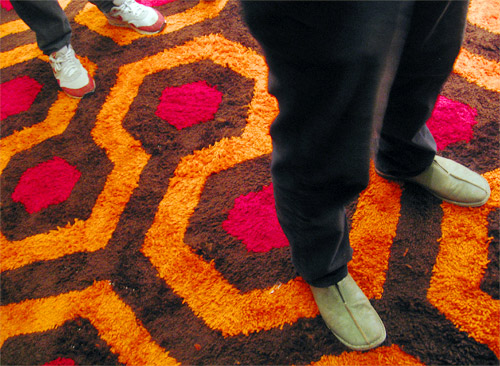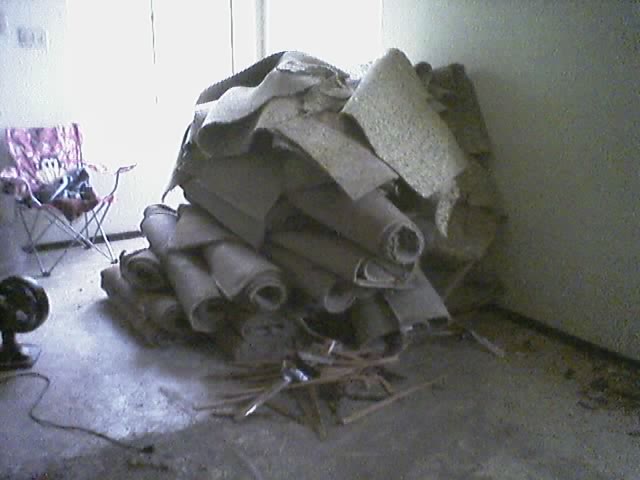London Carpet Cleaner You Can Trust
Looking for a Carpet Cleaner?
Gustavo Enrique0 commentsUncategorized

One of the unfortunate things that happen at wine tastings, apart from encountering wine that hasn’t been treated with the respect that it deserves, is that some wine inevitably ends up getting spilt. This is worse than just wasting a good wine – although some connoisseurs may well say that this is a worthy fate for a bad one. It’s also bad for the carpets if the wine in question is a red of some kind or even a rosé. This is because red wine is notorious for staining fibres of any type.
We will assume that your wine-tasting sessions have come some way from the symposia of Classical Greece (yes, a symposium was originally a wine-tasting and drinking session). Here, I’m not referring to the quality of your discussions, even though I doubt you have high-powered philosophers like Plato and Socrates attending. Instead, I’m referring to two habits that would have been tough on any carpets (which presumably were Persian or Turkish). The first was the practice of pouring out libations or drink offerings on the ground for the ancestors or the wine god Dionysius. The second was the popular drinking game kottabos, which involved flinging the dregs of your wine glass (or cup, in their case) at a target. One can imagine the mess that the slaves had to clean up (because, ahem, they didn’t have effective carpet cleaning methods back then, didn’t they?). But what can you expect from people who thought that the best way to drink wine was to water it down and/or add seawater or pine resin to improve the flavour?
Even without the messy games of the ancient Greeks, what happens to carpets is bad enough, so knowing how to remove red wine stains from carpets is important if you’re the host.
You may take your wine seriously, but even so, there is no need to go to the extremes dictated by some of the more formal and traditional churches in the case of communion wine from Mass being spilt on the carpets. If consecrated wine fell on the carpets courtesy of a clumsy altar boy, then the correct “cleaning” procedure was to cut out the affected part of the carpet and burn it so that it didn’t need to be profaned with something as mundane as scrubbing brushes and water.
Neither do you need to follow the common advice that if red wine is spilt on the carpet, the best thing to remove it is to splash on some white wine. That really is a waste of wine, not just because of the original spill but because following it with white wine is unnecessary. It is true that adding another liquid to flush the red wine out of the carpet fibres and stop it from drying is a good way to prevent a stain. However, you can keep that nice Sav Blanc in the bottle, as other clear liquids will do the job, preferably club soda or ordinary water.
All right, so what should happen if wine is spilt on the carpet? There you are, savouring a good pinot noir, when someone steps backwards, jostling your elbow and sending half of the contents of your glass downwards. It narrowly misses your trousers or skirt, but it lands on the carpet. You accept the apologies of the clumsy jostler, along with the offer of another glass, but then what do you do?

The important thing is to act quickly. If red wine spills onto the carpet and dries, the stain can become just about permanent, or at least becomes a lot more difficult to remove, even by an expert. Your goal in dealing with that spilt pinot noir is to prevent the carpet fibres or, worse still, the backing from absorbing the wine, because once it’s in, it’s a lot harder to get out. By the way, the techniques for getting red wine out of carpets apply to all varieties, not just Pinot Noir. They also work just as well for Shiraz, Cabernet Sauvignon, Merlot and all the rest of them, including classics like port and claret. The techniques also work if the wine has not fallen on the carpet but onto the upholstery.
The easiest way to prevent the wine from soaking into the fibres of the carpet is to add something that will either absorb the red wine more quickly than the carpet does or something else that will be absorbed by the fibres because if the carpet fibres are already full of something other than red wine, they can’t take in any more. They know their limits, unlike some people I can name! Ideally, you should do both, although there is no product that will do both at once.
The first step is to add a clear liquid like water or club soda (please don’t use the chardonnay for this unless you absolutely have no other choice). Plain water is usually available. Club soda also works very well. In fact, professional carpet cleaners use club soda as the moistening agent when they apply the bonnet buffing technique. Use enough water to cover the spot but not enough to spread the spill elsewhere, or the problem will become much worse.
The next step is to blot up the mixture of wine and water (or soda). For this, use a tissue or a paper towel or something that won’t matter if it gets a little stained as a result – maybe a paper napkin from the table where the nibbles are being offered? Your host (or you, if you are the host) may have an old towel handy. Just make sure that it’s very absorbent, as it will be competing with the natural jute backing of the carpet for the liquid down there. You may need to use more than one towel or paper towel, depending on how much wine was originally spilt and how much water or club soda you added.
When you have blotted up enough to leave the carpet fibres only a little damp, there’s another old trick that you can apply: adding salt. Salt is super absorbent and will draw out any liquid that has managed to enter the carpet fibres. The salt will need to sit on that patch of carpet for a while to do its job. After that, it should be swept up and disposed of. It shouldn’t be vacuumed up, as the salt can wreak havoc on the metal bits of your vacuum cleaner – and all vacuum cleaners have them.

After you have done what you can to remove the wine stain, there may be some left behind. This is where you need to call in the services of a professional carpet cleaner who has all the tools and chemicals, and techniques needed to get out that stubborn bit of pinot noir. Unless, of course, you don’t want to throw your stained carpet away, right on the pile of discarded carpets around the rubbish containers (see photo above).
In general, you will only need to get your carpet spot-cleaned (spot treatment), which involves getting just one or two stains out. However, if the do was a bit more lively and started straying into Ancient Greek symposium territory (in terms of the wine going everywhere, not the addition of seawater to what you drank), then you may need to get the professional to clean more of your carpet (i.e. the whole thing). It really is worth it, as booking a professional carpet cleaning session is a lot cheaper than replacing the entire carpet (or lounge suite or whatever it was that the Pinot Noir fell onto). A good professional will be able to apply a range of techniques to remove stains from delicate items like heirloom rugs or hides as well as your good old standard carpet, so there’s no need to despair if you discover wine stains on one of these.
However, don’t procrastinate, as the longer red wine sits in carpet fibres, the tougher it is to get out. As the Romans (who were even messier than the Greeks at wine-drinking dos) would say, carpe diem (seize the day)!
Gustavo Enrique0 commentsCarpet mentor says
Hey guys, your carpet cleaning mentor Gustavo is here.
I know that some of you provide cleaning services, and some of you purchase said services (either for your home or your company).
So, let me speak about the situation when people book carpet cleaners. What do they know? What do they need? If I can put it this way, a bit of perspective from the customer’s point of view.
OK, here goes my advice to potential customers.
There are different carpet designs and textures. Some of them are expensive and hand-made with flawless skills and tools. Others are cheap, mass-produced, and easy to make. Different materials are used in the manufacturing process of synthetic and natural materials. Both types, however, need regular cleaning. An important thing to note here is that the wrong/unsuitable product or technique may damage your beautiful carpet or rug.
Typically, there are two major carpet cleaning methods. These are wet and dry cleaning techniques. The first one, also called hot water extraction cleaning, is the most widely used, mainly due to the superior results. Dry cleaning is used when your carpet fibers cannot take excessive amounts of water i.e., wool, sisal, seagrass, jute, etc. This method is also called low moisture cleaning. It uses encapsulation carpet cleaning method. Due to the lack of water, this carpet cleaning method does not achieve great results with hard-to-remove stains.
Stains are the main reason carpet owners look to carpet cleaners for help. While most stains can be removed if wiped clean immediately, some of the more stubborn stains need professional cleaning services.
Professional cleaners know which cleaning products to use on the carpet to remove the stain without hampering the carpet much. Too harsh cleaning products only wear out the carpet.
Most people are apprehensive about hiring carpet technicians to clean their carpets as they think hiring them is a waste of money. However, little do they know that periodical cleaning of carpets by professional prolong their life and thus saves the need to spend money to buy a new carpet to replace a worn-out carpet.
So while regular vacuuming of the carpet and immediate removal of stains can keep your carpet clean, it’s always better to hire professional cleaners who use the right equipment and cleaning products to clean your carpet.
In London, carpet cleaning prices vary greatly from one company to another. Moreover, there seems to be no consistent cost system for these companies. Some charge by square footage, some by room, while others seem to charge higher prices. Winters are quite slow months for carpet cleaners in London businesses, implying that it’s the best time to look around for good deals.
Most companies will send free advice via email or even over the phone. This is the best way to ensure you avoid invisible charges or expenses, and you can evaluate what they offer without wasting too much time and money. However, you should not choose a company just because it is the cheapest, quality matters as well.
Most professional cleaners post images on social media (Instagram, Facebook, TikTok) to showcase the concept of their company’s performance. This is a great way of figuring out who they are and what they can do with their cleaning wands and portable extractor machines. On top of that, you will be able to compare the quality of work provided by different companies. When you find the right carpet cleaners, what’s even better is to contact them and find out whether they are insured for public liability.
Gustavo Enrique0 commentsCarpet mentor says
Choosing the floor covering types of your home is one of the most important long-term decisions you will do when you move in or re-decorate your residence. It is an expression of your tastes and preferences, but beyond the emotional pick, you should also consider the practical dimensions of the selection. Which of the floor covering types requires the most upkeep? Which one is likely to last longer without repairs? Should you make a uniform choice for the whole place or go room by room?
Before I share my thoughts, a quick disclaimer – they are entirely based on practical, not esthetical considerations. I have been into the carpet cleaning industry for almost two decades and have treated hundreds of home and office floors of various types. My personal preference is for the convenient and comfortable rather than the beautiful – the latter is entirely subjective anyway. First, I will make a quick commentary on the most common floor covering types and then share my recommendations for each room of your house or flat.
Now that I have covered the different types, what would be the most suitable choice for each room of your home?
Let’s start with the bedroom. Since you do not move that much around and you are not likely to bring in too many beverages or dishes (unless you like the occasional snack in bed), the best choice would be carpets. They will create the requisite warmth and comfort and will be relatively easy to maintain. You can add a small rug or two for extra comfort and a nice personal touch if you feel like it. (The same, obviously, applies to all guest rooms.)
I would go for nothing else but a tile floor in the kitchen. Listen, if you frequently cook or eat there, the last thing you want on your mind is the multiple stains that will inevitably appear on the floor. You want a floor that is easy to clean and maintain, that you can sweep and polish in a minute if you spill some wine or olive oil on it. Can you imagine the pandemonium if you spill a pack of flour all over the place? No, thank you!
Tiles are also the obvious choice for the bathroom, but for a different reason. The consideration here is humidity – it will lead to mould on carpets and cracks on wooden planking. If you are worried about slippage, throw in a bath rug close to the tub or shower cabin – it should do the trick.
I left the most difficult choice for last – what should you do with the living room? Well, enough with the reason! How about you listen to your heart for a change? I think each of the floor covering options has its pros and cons, so you should choose the one that feels the best!
Gustavo Enrique0 commentsCarpet mentor says
Everybody has spilt some water on their carpets – it happens at least once per year, I’ve done it twice already! It is not such a big deal – after all, it’s just water, it will dry out without a stain. Or will it? Here are a few reasons never to underestimate the seemingly harmless spills and to deal with them as quickly as possible.
Reason number one – do not give mould any foothold in your home. You will be surprised how quickly mould can appear on carpets, especially if the weather is humid and hot.
Reason number two – if not treated, water spills loosen the fabrics of the carpet. It happens slowly, and you will not notice it at first, but when you do, it will be too late to react.
Reason number three – humidity is the perfect condition for germs and bacteria to thrive. Water in itself is harmless, but it is the best possible environment for these microparticles, which are attracted to it like a magnet.
Now that you now just the most common dangers, here is a short video to help you deal with the problem whenever it appears.